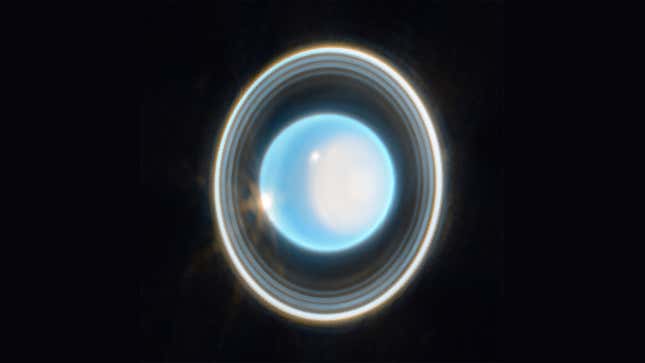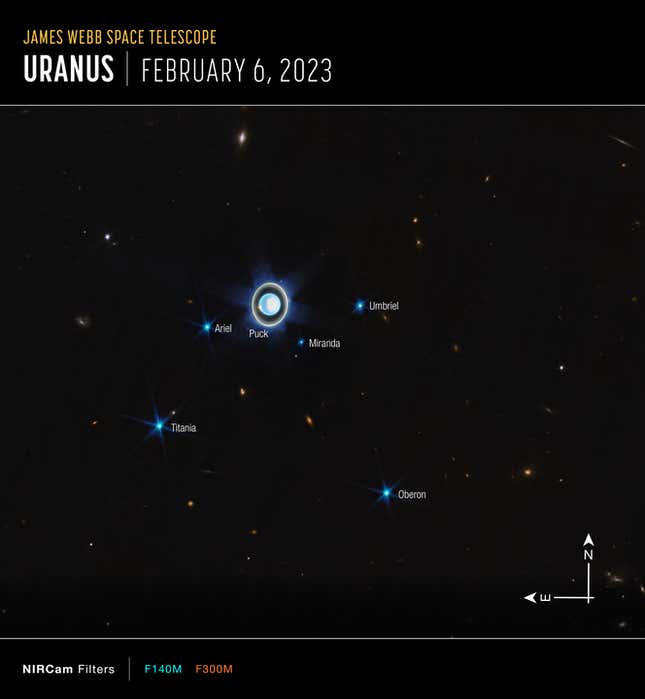
The Webb Space Telescope has taken a stunning image of Uranus, with a twist: Here, the seventh planet from the Sun is encircled by prominent concentric rings.
Uranus has 13 dusty rings, 11 of which are visible in the Webb image. The rings are split into two sets (an inner and outer system), which are named for a range of Greek letters and numbers. The ring system is also visible, albeit more faintly, in Hubble shots of Uranus taken in November 2014 and November 2022.
Each planet has its quirks, but Uranus stands out even among misfits. It is an ice giant, thought to be mostly (80% or more) icy water, methane, and ammonia surrounding a rocky core, according to NASA. Its skies are dominated by storm clouds, though it is not nearly as turbid as the gas giant Jupiter. It has a larger diameter than Neptune, the other ice giant, but a slightly smaller mass.

Besides its rings, Uranus has an extreme tilt relative to the solar system’s orbital plane, such that its north pole is currently oriented toward the Sun. It’s also got 27 moons (yes, even Uranus gets mooned.)
The planet has a polar cap—a big white splotch—that appears to only materialize in the summer, when under direct sunlight. The polar cap will be facing Earth in 2028, giving Webb and Hubble an opportunity to image the structure in greater detail.

The new Webb image comes from a 12-minute exposure taken on February 6, 2023, when the world was 1.83 billion miles from Earth. A wider field of view captures six moons: Puck, Ariel, Miranda, Umbriel, and the outlying Titania and Oberon. (Uranus is unique for having moons named for the works of Shakespeare and Alexander Pope, rather than the typically Greek or Roman nomenclature.)
The inner moons are thought to be about half water ice and half rock; less is known about the constitution of the outer moons. Background galaxies are also visible in the broader image.
Uranus may finally be having its moment. Webb is set to make more observations of the planet, and scientists are clamoring for a dedicated mission to the ice giant.
Correction: A previous version of this story said “Venus” where it ought to have said “Neptune.”

